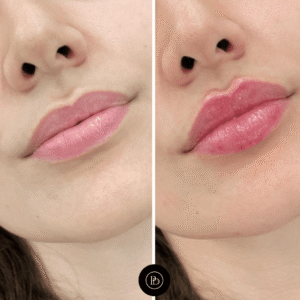
Varicocele—a dilation of the veins within the scrotum—can cause discomfort, impact fertility, or lead to testicular changes if untreated. Varicocele Treatment in Abu Dhabi has benefited from advancements in urology and interventional radiology, making minimally invasive treatments increasingly accessible and effective. This article explores modern approaches to treating varicocele with minimally invasive techniques, how they are applied in Abu Dhabi, what patients can expect, and answers common questions.
Understanding Minimally Invasive Varicocele Treatments
Minimally invasive treatments aim to correct the vascular issue causing varicocele while minimizing trauma to surrounding tissues. This approach shortens recovery time and improves patient comfort. Two primary minimally invasive options include laparoscopic varicocelectomy and percutaneous embolization (catheter-based embolization). Both seek to block or remove abnormal venous drainage to redirect blood flow through healthier veins and reduce pressure in the pampiniform plexus.
Laparoscopic Varicocelectomy
How It Works
Laparoscopic varicocelectomy involves making small incisions, usually in the lower abdomen, through which a camera and fine instruments are inserted. The surgeon locates the dilated veins and ligates or clips them to interrupt abnormal blood flow. The magnified view allows identification and treatment of small collateral veins. This procedure can address varicocele on one or both sides through the same incisions and may sometimes be combined with treatment of other abdominal conditions.
Benefits in the Abu Dhabi Setting
In Abu Dhabi, laparoscopic surgery is well-established as a standard treatment in advanced urology centers. It offers smaller wounds, reduced tissue trauma, and quicker return to normal activities. The excellent visualization lowers the chance of recurrence due to missed veins compared to open surgery.
What Patients Can Expect
Patients typically stay in the hospital for observation but are often discharged quickly. Recovery is faster compared to open surgery, with small incisions that heal cleanly. Postoperative discomfort is usually manageable, and most patients resume normal activities within days to a couple of weeks, depending on individual circumstances.
Percutaneous Embolization (Catheter-Based Approach)
Mechanism and Process
Percutaneous embolization is performed by an interventional radiologist. Through a small puncture, usually in the groin or neck, a catheter is guided under imaging to the affected testicular veins. Coils or occluding agents are then introduced to block the abnormal veins, redirecting blood flow through healthier pathways.
This technique is non-surgical and relies on vascular access and radiologic guidance, avoiding the need for large incisions.
Application in Abu Dhabi
Abu Dhabi’s medical centers have mature interventional radiology departments equipped to perform embolization for varicocele. Patients often prefer this less invasive option due to its shorter recovery time and outpatient nature.
Recovery and Outcomes
Since embolization does not involve major incisions, patients generally experience minimal discomfort and resume light activities quickly. The procedure offers high success rates with effective vein closure. Many patients find recovery more favorable compared to open surgery. Long-term results often compare well with surgical options, especially when chosen based on individual anatomy.
Choosing the Right Approach in Abu Dhabi
Treatment choice depends on the varicocele’s anatomy and severity, presence of collateral veins, prior treatments, overall health, patient preference, and the experience of the medical team. Multidisciplinary evaluation involving urologists and interventional radiologists is common.
Some patients may benefit more from laparoscopic surgery, especially if there are other abdominal issues to address. Others may prefer embolization for its less invasive nature and quicker recovery. Microsurgical techniques may also be considered as minimally invasive options in certain cases.
Abu Dhabi’s advanced medical facilities offer access to multiple treatment modalities, allowing personalized and optimal care.
Anticipated Recovery and Follow-Up
After minimally invasive varicocele treatment, follow-up usually involves imaging to confirm closure or reduction of abnormal veins and assessment of testicular blood flow. Semen analysis may be performed when fertility is a concern.
Patients are advised to avoid heavy lifting and strenuous activities during early recovery. The timeline for resuming various activities depends on the treatment method and individual healing. Many return to light activities within a few days and more intense activity within one to two weeks.
Because these techniques minimize tissue trauma, patients often experience less discomfort and faster return to normal life compared to traditional surgery.
Frequently Asked Questions (FAQs) on Minimally Invasive Varicocele Treatments in Abu Dhabi
What defines a minimally invasive procedure for varicocele?
Minimally invasive procedures require small or no incisions, minimal disruption of surrounding tissues, and often use imaging or endoscopic assistance. Laparoscopic varicocelectomy and catheter-based embolization fall into this category because they avoid extensive dissection and enable quicker recovery.
Is embolization suitable for all varicoceles?
Not all varicoceles have the same anatomy. The success of embolization depends on venous structure and accessibility by catheter. Some veins may be difficult to reach, making surgery or other approaches preferable in certain cases.
How soon can daily activities be resumed after treatment?
Light daily activities are generally resumed within days of minimally invasive treatment. More strenuous activities and heavy lifting may require one to two weeks before resuming, depending on the procedure and individual healing.
How is success measured after treatment?
Success is defined by symptom relief, improvement in semen quality (when fertility is a concern), and imaging evidence of decreased abnormal venous flow. Follow-up studies help confirm adequate treatment.
Can varicocele recur after these treatments?
Recurrence can occur, especially if collateral veins were missed or not fully treated. Detailed imaging and careful planning available in Abu Dhabi reduce this risk.
Which technique is better, surgery or embolization?
There is no universal answer. Embolization offers quicker recovery and fewer incisions, while laparoscopic surgery allows direct visualization and control. The best choice depends on individual anatomy, preferences, and expert recommendations.
Is hospitalization necessary?
Many minimally invasive procedures can be done on an outpatient basis or with brief observation. Admission depends on institutional protocols and patient-specific factors.
Are these treatments widely available in Abu Dhabi?
Yes, Abu Dhabi has advanced facilities and specialists in urology and interventional radiology offering both laparoscopic varicocelectomy and embolization, ensuring patients have access to a variety of treatment options.



